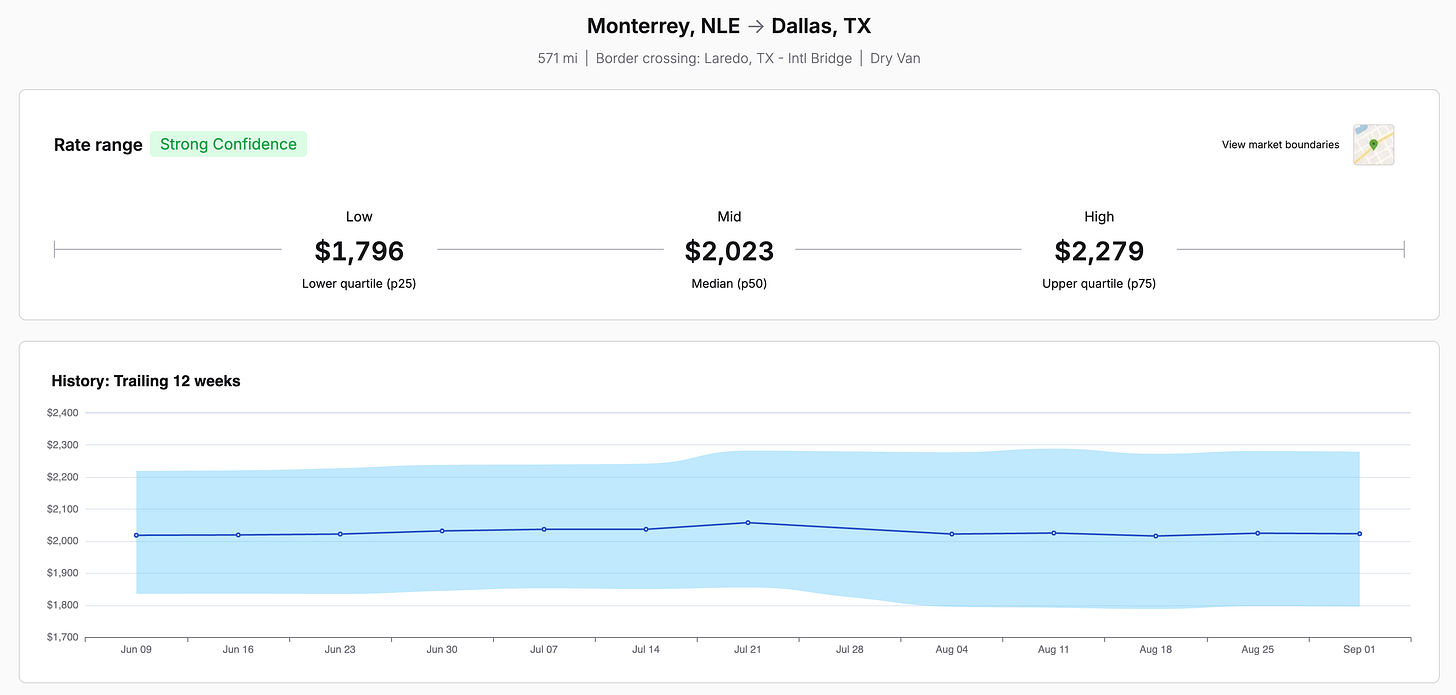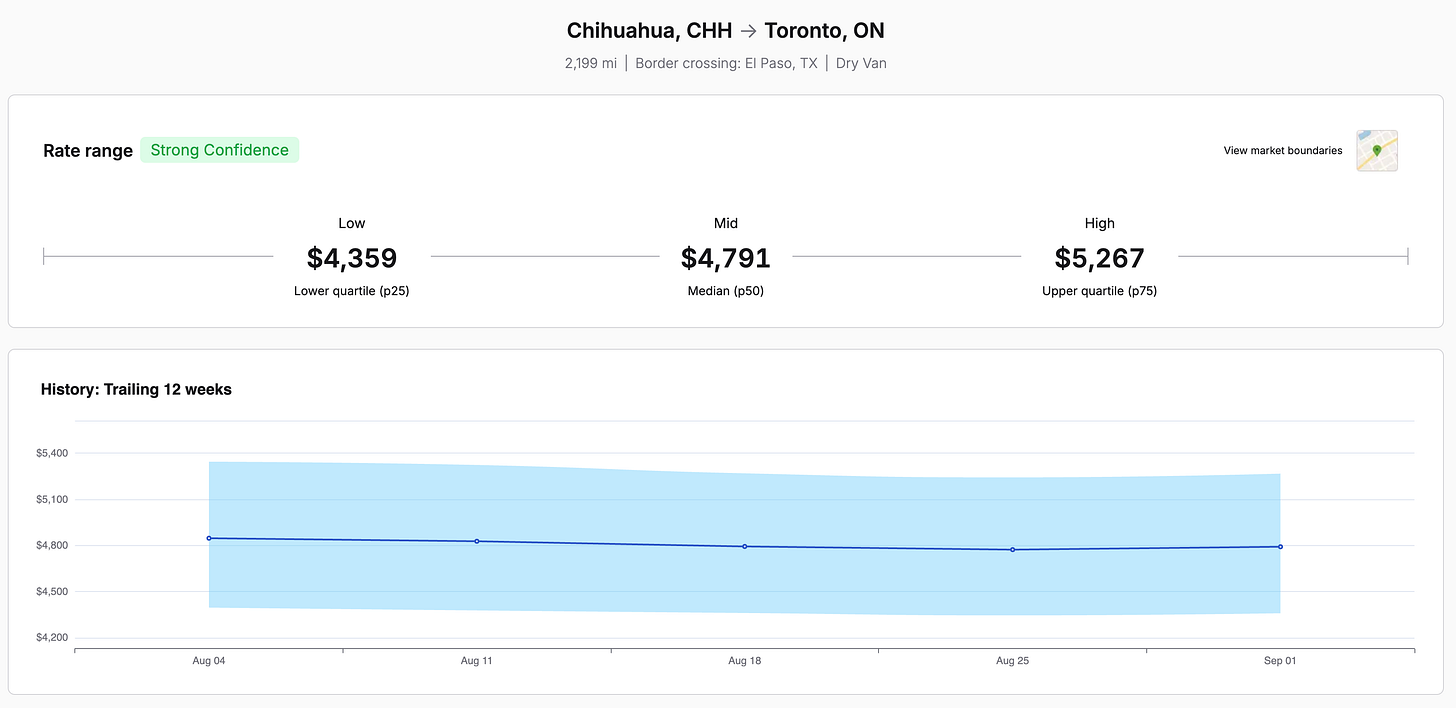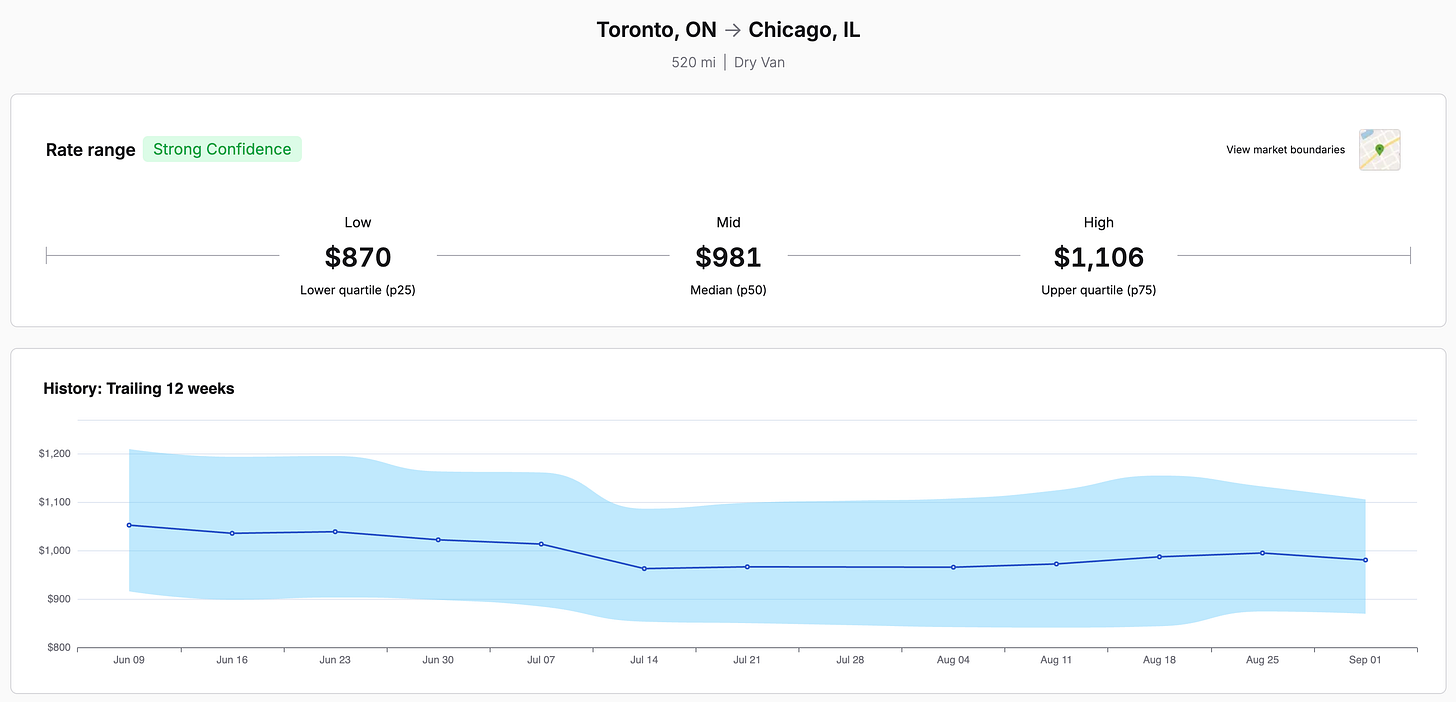Mexico 101: What Makes It Different
Why fear of the unknown — not customs — is the biggest barrier to cross-border freight.
I’ve been on the road the past few weeks — spending time with customers and prospects in Dallas TX, Kansas City MO, and Birmingham AL, including our friends at Blackbox Logistics and Will Hopkins (check out my podcast appearance with Will on 2 Dawgs 1 Pod). I also spoke at the TIA regional event at McLeod’s headquarters and Transportation Club of Dallas Fort Worth, where cross-border freight was a hot topic.
The more time I spend in these rooms, the more convinced I am of one simple truth: brokers of all sizes can grow their cross-border footprint. Whether you’re a top-10 3PL or a 10-person shop, the playbook is within reach — and it starts with your existing customers.
Fear of the Unknown: The Real Gatekeeper
People often say customs is the barrier to Mexico freight. It isn’t. Fear of the unknown is the real gatekeeper.
Most brokers hesitate to pursue cross-border because they don’t know when to ask their customers about it, how to support it, or what will be expected of them. That hesitation is exactly why the opportunity feels so different.
Here’s the reality: you don’t need to be a customs expert. You don’t need to memorize forms or set up a Mexican entity. What you do need is curiosity, the confidence to ask the right questions, and the willingness to lean in with a partner like Cargado to expand your service offering.
If you don’t, you risk falling behind while others take the freight that could have been yours.
Start by Asking the Right Questions
Here are the four questions that consistently uncover opportunities:
Are you manufacturing anything in Mexico?
Are you buying anything from Mexico?
Are you selling anything to your customers who have facilities in Mexico?
And what about your Canada freight — do you sell anything in Canada?
Customers’ answers will almost always reveal freight already moving. And more often than not, they’ll admit Mexico is their top headache. That’s your entry point.
Mexico 101: What You Really Need to Know
1. Customs isn’t your job — but relationships are
Every load that crosses into or out of Mexico requires customs brokers on both sides. But here’s the thing: you don’t have to do their job.
Make sure your customer introduces you to their customs broker. That broker will handle the paperwork and tell you what they need and when. Your responsibility is to go get those details and keep everything accurate.
Instead of fearing customs, focus on making the connection and building the relationship. That’s where your value lies.
2. Expect multiple hand-offs
Unlike a domestic load, cross-border moves typically involve at least three carriers:
A U.S. carrier moving freight to the border
A transfer (dray) carrier handling the border crossing
A Mexico carrier hauling inland
Your job is to smooth those hand-offs so your customer doesn’t feel the friction.
3. Northbound ≠ southbound
Southbound (U.S. → Mexico): Export paperwork and customs delays are the big risks.
Northbound (Mexico → U.S.): This is production freight — time-sensitive goods feeding U.S. plants and DCs. Miss a delivery, and you risk shutting down a line.
Brokers who understand these dynamics can set expectations, prevent surprises, and keep customers coming back.
4. Don’t sleep on Canada
The U.S.–Canada border is simpler than Mexico, but the freight opportunity is enormous. Many shippers quietly move steady Canada lanes, often without dedicated broker support. Asking “Do you sell anything in Canada?” is a powerful way to uncover revenue hiding in plain sight.
5. Education is the sale
At multiple events recently, I’ve been reminded that many brokers still think Mexico is “too complicated.” But when you break it down — who touches the freight, what the customs broker handles, and how the hand-offs work — the fear disappears. Customers don’t want you to be a customs lawyer; they want you to make the process feel manageable.
Education is what turns curiosity into confidence.
How to Put This Into Practice
Here’s a simple path:
Ask the four questions with every customer.
Pick one lane. Don’t try to boil the ocean. Start with Monterrey–Dallas, Guadalajara–Montreal, or Toronto–Chicago.
Get introduced to the customs broker. Let them lead; you just manage the flow.
Work with a handful of repeat carriers. Consistency beats scattershot.
Communicate clearly. Customers don’t need perfection — they need transparency.
Leverage the Cargado team of cross-border experts. Everyone deserves the chance to become an expert. With the right tools and support, you don’t have to learn by trial and error.
Data Snapshot
To make this tangible, I’ll be adding live screenshots from our platform showing rate data on a few example lanes:
Monterrey, NL → Dallas, TX
Chihuahua, CHH → Toronto, ON
Toronto, ON → Chicago, IL
Each one highlights a different dimension: border-adjacent freight, western Mexico to Canada, and core U.S.–Canada flows.
Final Thoughts
The real barrier to cross-border freight isn’t customs or language barrier. It’s fear of the unknown.
If you’re waiting until you’re “ready,” you’ll be waiting forever. The brokers who are growing fastest aren’t waiting — they’re asking the right questions, saying yes to their customers, and leaning in with Cargado to expand their service offerings.
Mexico and Canada aren’t side hustles anymore. They’re growth strategies. And if you don’t embrace them, someone else will.
👉 Stay updated on the latest in cross-border logistics and freight tech by subscribing at CongratsOnAllTheProgress.com.





